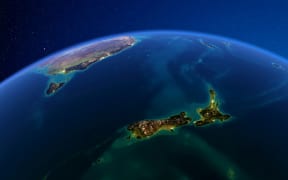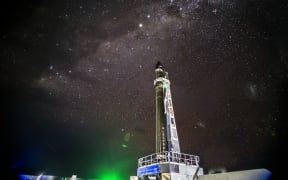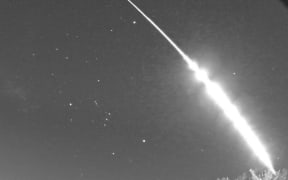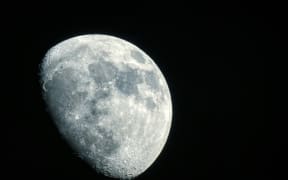By Georgina Rannard, BBC science reporter
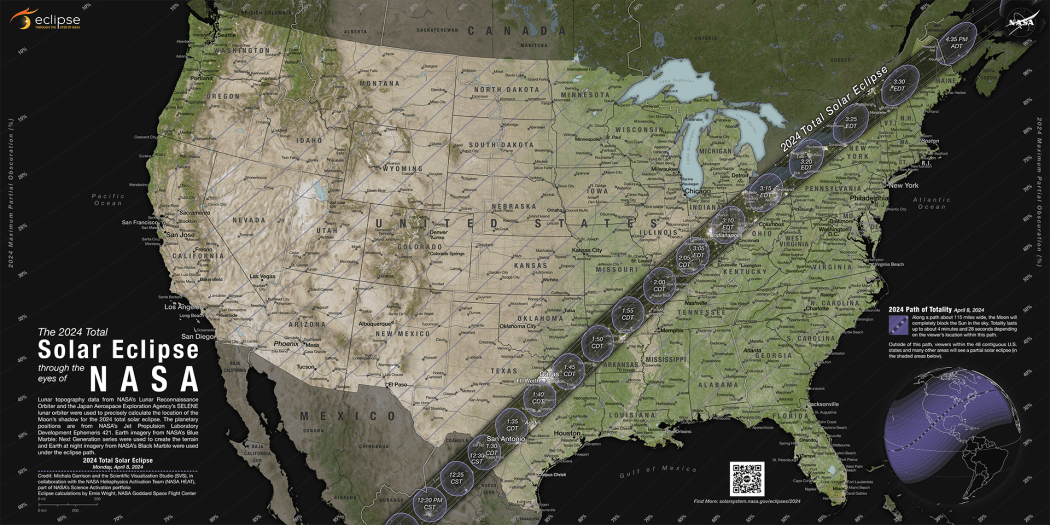
The path of totality and partial contours crossing the US for the 2024 total solar eclipse occurring on 8 April, 2024. Photo: Supplied/ NASA
Eclipse fever is building. Millions in North America are hoping to spend around four minutes in total darkness as the Moon blocks the Sun's light on Monday (Tuesday NZ time).
This total solar eclipse won't be visible from New Zealand (the next one to be seen from Aotearoa isn't expected until 2028, though a partial solar eclipse will be visible from these shores in October).
But when Monday comes, for those positioned to see it, those precious minutes of darkness will be an opportunity for often impossible science experiments - a chance to unravel the secrets of our universe.
Researchers will fly rockets into the path of the eclipse, stand in zoos watching animals, send radio signals across the globe, and peer into space with massive cameras.
And you don't need to be a scientist to take part.
But it could still go wrong. A solar flare or even some humble clouds could throw those plans into turmoil.
Possibilities of mating turtles or snoozing gorillas
Professor Adam Hartstone-Rose from North Carolina State University will spend Monday at the zoo in Fort Worth, Texas.
He'll be looking out for strange behaviours in animals from gorillas to giraffes to Galapagos turtles. Spoiler: during the 2017 eclipse, the turtles suddenly started mating.
Lots of animals appear to have anxious responses to the sudden darkness.
"The flamingos last time did a beautiful thing," he says. "As the eclipse was building, the adults gathered the chicks into the middle of the flock, and looked into the sky as if they were worried about an aerial predator coming down."
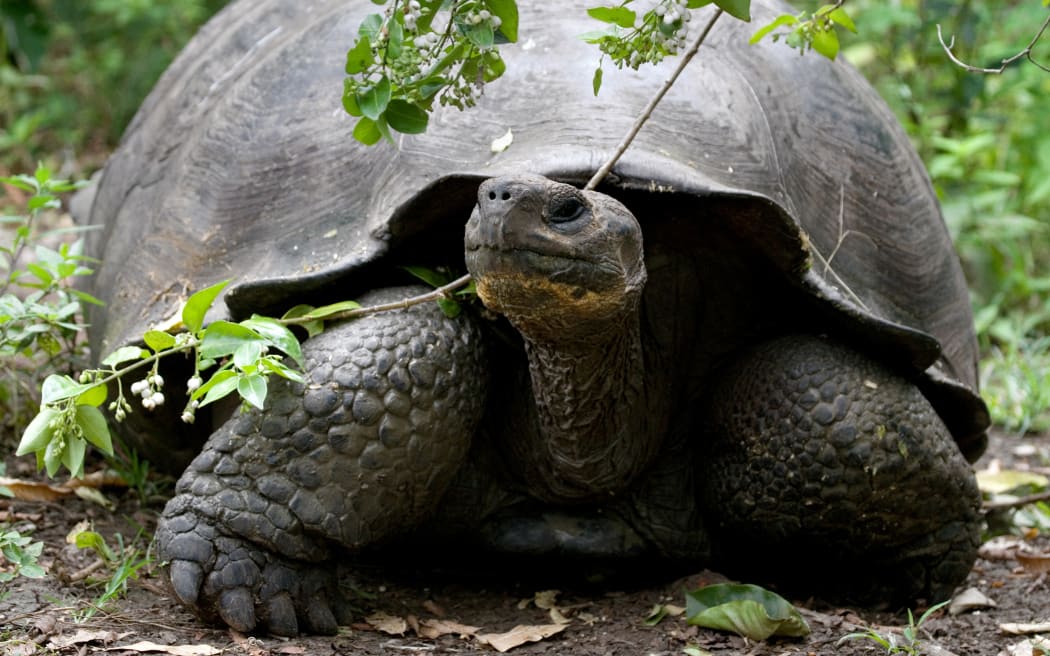
Scientists observed some turtles mating at the height of a total eclipse in 2017 Photo: AFP/ Andrey Gudkov
The gorillas, meanwhile, moved to where they sleep and began their bedtime routines, as circadian rhythms were disrupted.
One nocturnal bird called a Tawny Frogmouth woke up from where it usually camouflages as a rotting tree stump. It started looking for food, and then suddenly went back into disguise when the sun re-appeared.
Anyone can join the experiment. If you see pets, farm animals or wild animals behaving unusually during the eclipse, you can tell Mark's team online.
The team will have almost instant results and will publish their findings in the days after the eclipse.
A glimpse into roaring plasma
When darkness falls on parts of North America, one part of the Sun will peek out that people have been trying to study for centuries - its atmosphere, or corona.
This mysterious part of the Sun is made up of magnetised plasma and measures more than a million degrees Celsius.
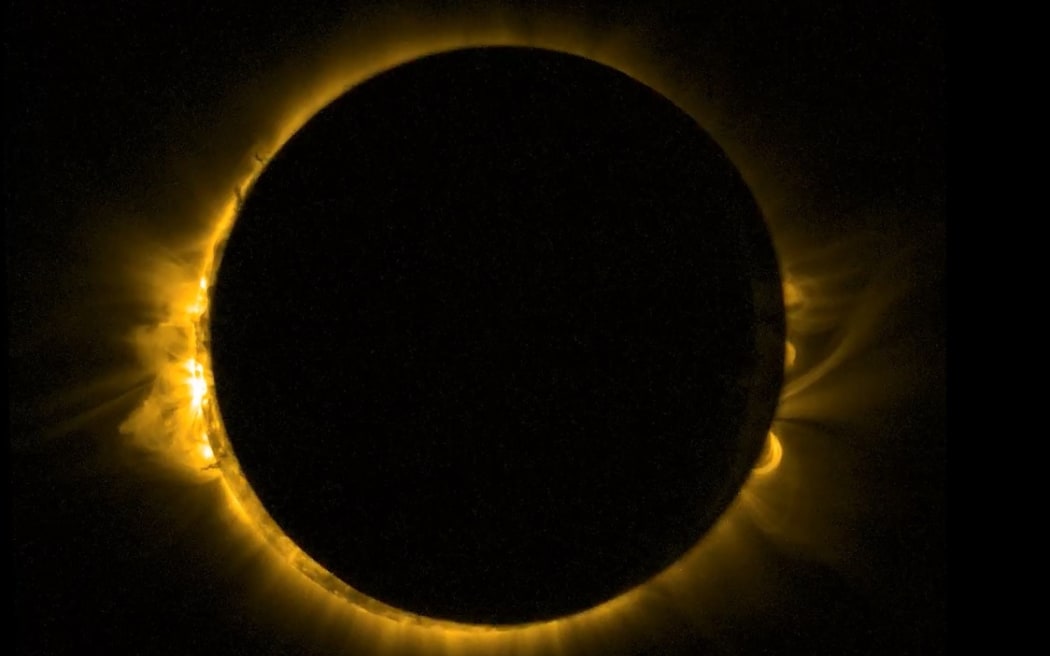
A total solar eclipse affords a rare opportunity to study the Sun's corona. This image was taken during a partial solar eclipse in 2015, captured from the European Space Agency's Proba-2 minisatellite in extreme ultraviolet wavelengths, recording the turbulent surface of the Sun and its swirling corona. Photo: ESA/ Proba-2
Normally the Sun's incredible brightness makes the corona impossible to see, but during this eclipse scientists in Dallas, Texas, will be able to point instruments at it and take images.
Scientists with Aberystwyth University in Wales and from NASA hope for an insight into solar wind, which is the plasma thrown from the Sun's surface. Another puzzle is why the corona seems to be much hotter than the Sun's surface, despite being on its edge.
They might even see what is called a coronal mass ejection, when huge plasma clouds are thrown from the atmosphere into Space. Ejections can cause problems for satellites we use on Earth.
A lot of money, time and logistics have gone into that four-minute window, says Huw Morgan, professor of physics at Aberystwyth University.
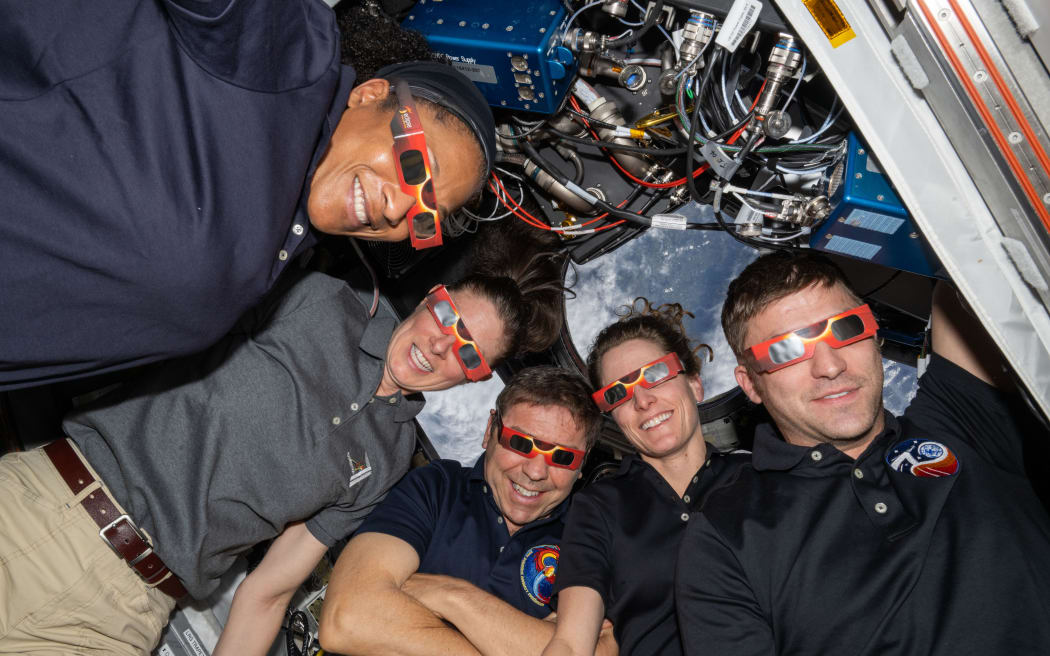
NASA astronauts aboard the International Space Station show off their eclipse glasses, which allow safe viewing of the Sun during a solar eclipse. Photo: NASA/ Loral O’Hara
"It's a real feeling of euphoria when it goes right, because you prepared for so long. But if there's a cloud, that's a disaster. And there's nothing we can do about that," he says.
Radio listening party
The Sun's activity can disrupt almost all our communications, including the humble long-wave radio.
Energy from the Sun charges a region in the upper atmosphere called the ionosphere, which helps radio transmissions whizz around the planet. But when the Moon blocks the Sun, the ionosphere is affected.
To test what that does to radio, hundreds of amateur radio operators will join a listening party and send signals to each other across the world, competing for the most connections. They might communicate in Morse code or even speak.
The results could help scientists better understand radio communications used by emergency workers, aeroplanes, and ships, as well as GPS, according to Nathaniel Frissell at University of Scranton in Pennsylvania, who is running the party.
Thomas Pisano, an electric engineering student with Dr Frissell, plans to compete. Sitting at desks with radio equipment, he'll send out signals and try to connect with as many operators as possible worldwide.
"There's a strong sense of community," he says. "We're all really excited to get this data."
Most of the communications are formal - station name and location - but each one signs off with "73", a code for best wishes.
"It's our radio way of saying farewell and take care," he says.
While the eclipse will barely be visible in the UK, radio operators across the country will still tune into messages sent from the other side of the Atlantic. Radio operator Gwyn Griffiths plans to both send and receive long-wave signals across the ocean to gauge how far they travel.
Flying jets to chase the eclipse
US space agency NASA will fly WB-57 jets along the eclipse path to take pictures from 15,240m above Earth.
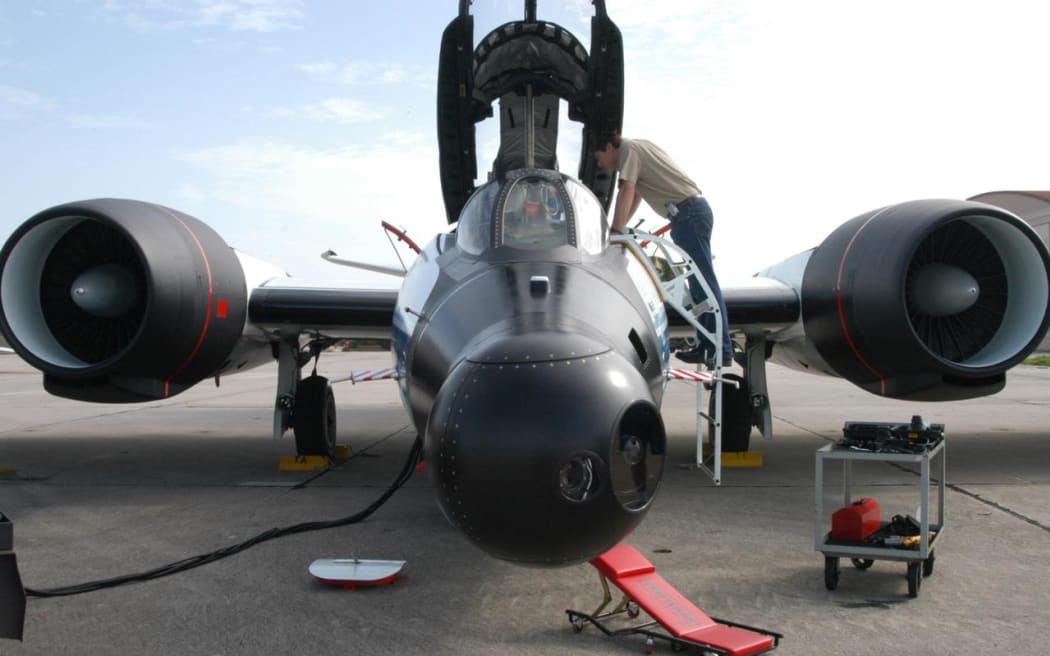
NASA will use WB-57 jets to gather data during this total solar eclipse. Photo: Supplied/ NASA
Flying above the clouds means there is no chance they will miss the eclipse. And the jets' cameras should take clearer pictures because they will capture wavelengths that don't normally make it all the way to Earth.
Along with spotting new details in the corona, NASA may be able to study a dust ring around the Sun and search for asteroids possibly orbiting nearby.
One instrument on board the planes called a spectrometer will help them learn more about the bursts of solar material flying out from the Sun.
The planes will also buy time in the eclipse.
They travel at 460mph (740km/h), and will spend more than 6 minutes and 22 seconds in the moon's shadow - nearly two minutes more than most people Earth it will be visible to, who will get just four and a half minutes on the ground, if they're lucky.
- This story was first published by BBC
